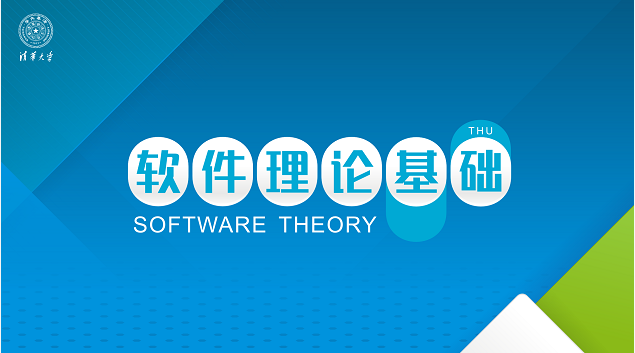
当前课程知识点:Socially-Responsible Real Estate Development: Learning to Use Impact Assessment Tools Effectively > Module 4: Case Study: Forest City > Forest City Case Study > Part 2
[NON-ENGLISH SPEECH]
碧桂园认为在新大陆建房地产
就可以避免知会公众 签订经纪合约
或进行社会影响及环境影响评估
但鉴于沿海已有大量居民高度依赖海岸环境生存
这种影响是无可避免的
因此没能及时知会利益相关方或与之进行沟通
引起了恐慌和冲突
其中最具影响力的利益相关方
就是新加坡政府
新加坡政府担心填海的沙子会污染水道
导致航道淤塞
并侵犯他们的领土
因无法估量开发项目所带来的影响
新加坡领导人向马来西亚首相表达了他们的担忧
作为回应 马来西亚环境部
叫停了项目
并强制要求碧桂园
进行详尽的环境影响评估
碧桂园企图回避环境影响评估的做法
导致了代价高昂的项目延期 负面公众影响
并损害了公司在新加坡的声誉
在新加坡对长远未来的担忧引发环境影响评估的同时
当地居民已经开始
看到项目的负面影响
其中感受最深的
就是被项目所在地阻隔而无法到达渔区的渔民
[NON-ENGLISH SPEECH]
除了失去渔区
渔民们还注意到
可以捕鱼的地方能捕到的鱼也变少了
[NON-ENGLISH SPEECH]
苏丹和碧桂园
在项目开始动工后
明显感受到了项目对当地800渔民的影响
渔民协会的领导人
约见了开发项目负责人
以进行协商
[NON-ENGLISH SPEECH]
渔民们明显感受到了开发项目带来的影响
而开发商的解决方法就是提供一笔赔偿金
支付渔民们短期内损失的收入
但开发商明确表示
渔民们不会得到长期赔偿
尽管填海造岛就意味着
渔区已永远消失了
另一个受项目影响的群体
就没有得到开发商这么大的关注了
碧桂园认为在海上进行房地产开发
就能将环境影响减至最低
因此也就无需进行环境影响评估
但建筑方修建的通往施工区的道路
堵塞了其中一条
流往渔村的河流
原本流动的活水变成死水 导致红树林开始死亡
没有进行环境影响评估的碧桂园
也没有注意到海草地
填海的沙子导致海草开始死亡
而海草对当地经济至关重要
当地人将这里称为
“海草地”
这里是他们的食物来源
是鱼类繁衍生息的地方
也就是说鱼类在此繁殖
大鱼会到那里觅食 所以渔民会在那里撒网
或者钓鱼
也就是说 那里是他们肉类食物的来源
也是他们收入的来源
因为他们卖出去的鱼就是在那里捕的
因为之前只有开船才能到达那里
那些没有船的人会在潮水落至最低时
去那里捡拾蚌类和贝壳
有了沙滩之后 更多人开始去那里捡拾
这对捕捞也造成了影响
这种影响不仅局限于项目施工地
在马来西亚大陆 大量项目砂土车
和施工车辆也使当地道路
出现了很多大型坑洼
红树林死亡加上河道堵塞
引发了海岸洪灾 这是很多当地居民
从未经历过的
当人们开始抱怨森林城市
只给当地居民带来了坏处而没有带来好处时
碧桂园承诺会制造新的工作机会
但碧桂园给来自中国 尼泊尔 缅甸和孟加拉的工人
建造了很多工棚
这让当地居民担心
森林城市项目
只会占用当地资源而不会为当地造福
碧桂园希望能悄无声息地迅速完成项目
他们相信与苏丹和渔民协会的交涉
已经解决了利益相关方问题
但没有咨询过当地居民
碧桂园就没能预见到填海带来的
深远环境影响和社会影响
直到马来西亚政府
叫停了项目
并强制碧桂园进行详尽的环境影响评估
-Welcome
--Welcome
-Course Welcome
--Welcome
-Entrance Survey
-Entrance Survey
-Learning Objectives
-Course Schedule
-Meet Your Course Instructors
-Grading and Completion Criteria
--html
-Introduction
-Lectures
--html
-Readings
--Social Impact Assessment: The State of the Art
--Social Impact Assessment and Public Participation in China
-Developer Interview
--Module 1
--html
-Questions
-Assignment
--html
--html
--Peer Assessment
-Debrief
--Discuss
-Introduction
-Lectures
-Readings
--Methods of Environmental Impact Assessment
--Public Participation and Environmental Dispute Resolution
--Environmental Impact Assessment for Developing Countries in Asia
--Importance of Nonobjective Judgements
--Example Environmental Impact Statement
-Developer Interview
--html
--Module 2
--html
-Questions
-Assignment
--html
--Peer Assessment
-Debrief
--Discuss
-Introduction
--Text
-Lectures
--html
-Readings
--Introduction to Social Impact Assessment
--Effectiveness in Social Impact Assessment
--Example Social Impact Statement
-Developer Interview
--Video
--Text
-Questions
-Assignment
-Debrief
--Discuss
-Introduction
--Text
-Forest City Case Study
--Part 1
--Part 2
--Part 3
--Additional Forest City Information
-Lectures
-Readings
--Dealing with An Angry Public
--Facility Siting and Public Opposition
-Developer Interview
--Module 4
--Text
-Questions
-Assignment
--html
--SCENARIO
-Debrief
--Discuss
-Introduction
-Lectures
-Readings
--Why Would Corporations Behave in Socially Responsible Ways?
--Social Impact Assessments of Large Dams Throughout the World
--Environmental Sustainability Principles for the Real Estate Industry
-Developer Interview
--Module 5
-Questions
-Assignment
--html
--SCENARIO
-Debrief
-Further Resources
-Thank You
--Thank you for taking the course
-Acknowledgements



